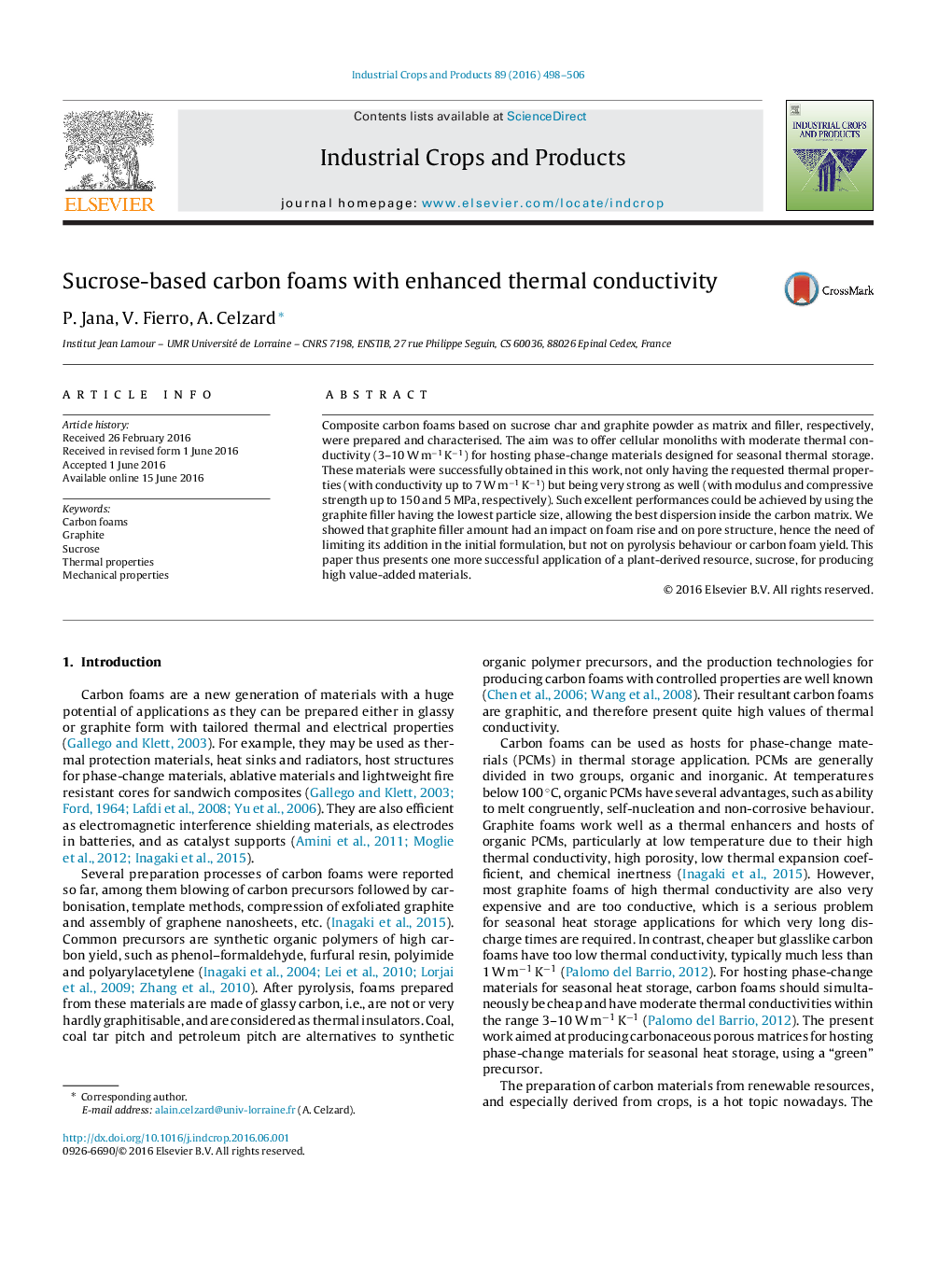| Article ID | Journal | Published Year | Pages | File Type |
|---|---|---|---|---|
| 4512174 | Industrial Crops and Products | 2016 | 9 Pages |
•Sucrose-based—graphite composite carbon foams were synthesised and characterised.•The thermal conductivity was better than that of similar materials based on phenolic resin.•Graphite did not impact pyrolysis behaviour nor carbon yield.•The filler of smallest particle size led to the highest thermal and mechanical properties.•Therefore, the resultant porous materials are suitable hosts for phase-change materials.
Composite carbon foams based on sucrose char and graphite powder as matrix and filler, respectively, were prepared and characterised. The aim was to offer cellular monoliths with moderate thermal conductivity (3–10 W m−1 K−1) for hosting phase-change materials designed for seasonal thermal storage. These materials were successfully obtained in this work, not only having the requested thermal properties (with conductivity up to 7 W m−1 K−1) but being very strong as well (with modulus and compressive strength up to 150 and 5 MPa, respectively). Such excellent performances could be achieved by using the graphite filler having the lowest particle size, allowing the best dispersion inside the carbon matrix. We showed that graphite filler amount had an impact on foam rise and on pore structure, hence the need of limiting its addition in the initial formulation, but not on pyrolysis behaviour or carbon foam yield. This paper thus presents one more successful application of a plant-derived resource, sucrose, for producing high value-added materials.
